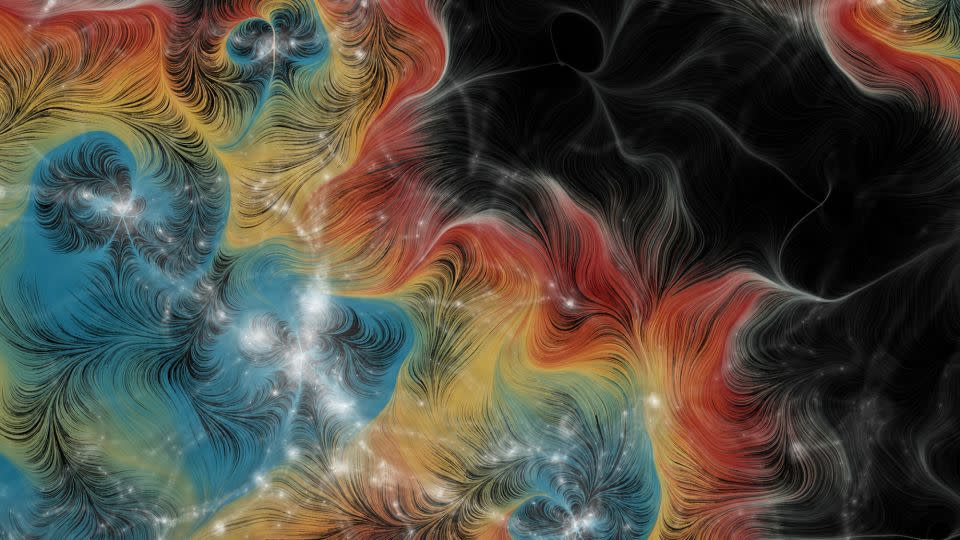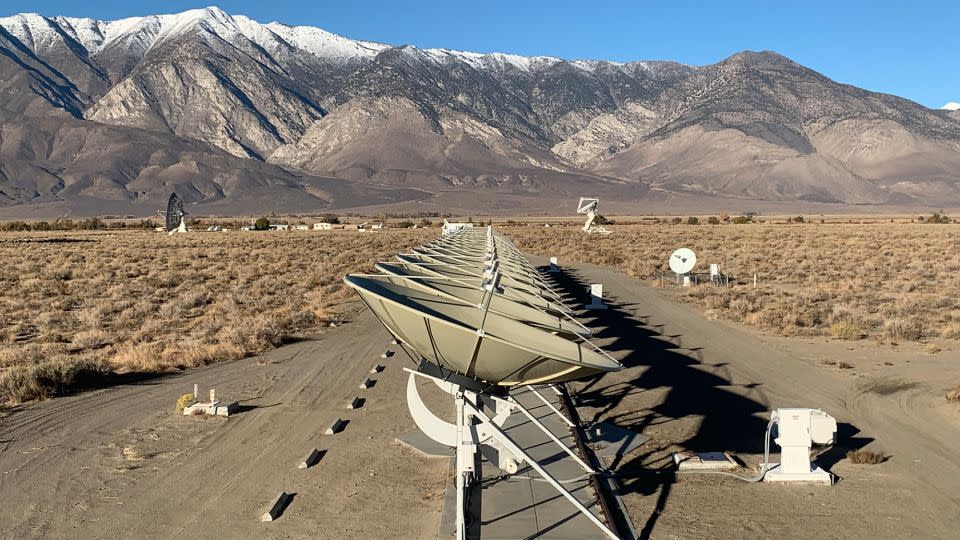Astronomers Solve Mystery of Missing Ordinary Matter in the Universe with Fast Radio Bursts
Astronomers have long struggled to measure the distribution of ordinary matter in the universe, due to its diffuse nature and emission of light at different wavelengths. This has led to a decades-long challenge known as the missing baryon problem. However, a new study published in Nature Astronomy has shed light on this issue by using fast radio bursts (FRBs) to map out the previously unseen matter.

Led by Liam Connor, an assistant professor of astronomy at Harvard University, a team of researchers has directly observed the missing matter by using the flashing of FRBs. The study used a combination of previously observed FRBs and new observations to measure the amount of matter along the pathway of the FRBs.
The team used the Deep Synoptic Array, a network of 110 radio telescopes located near Bishop, California, to find and identify 39 FRBs in the study. The farthest FRB discovered during the research, named FRB 20230521B, holds the record for the most distant FRB ever observed. The study also relied on observations from the W. M. Keck Observatory in Hawaii and Palomar Observatory near San Diego to measure distances between the FRBs and Earth.
By measuring how much each FRB signal slowed down as it passed through space before reaching Earth, the team was able to illuminate the gas it encountered along the way. The short pulses of FRBs are crucial for this measurement because they act like flashing cosmic beacons.
The team determined that 76% of cosmic matter exists as hot, low-density gas in the space between galaxies. Another 15% can be found in galactic halos, while the remainder is located within galaxies themselves as stars, planets, or cold gas. This observation-based finding aligns with prior predictions made using simulations.

Understanding the distribution of ordinary matter can help researchers understand how galaxies grow and evolve. "Baryons are pulled into galaxies by gravity, but supermassive black holes and exploding stars can blow them back out — like a cosmic thermostat cooling things down if the temperature gets too high," Connor said. "Our results show this feedback must be efficient, blasting gas out of galaxies and into the intergalactic medium."
Fast radio bursts may also be able to help map the cosmic web in detail, which serves as the backbone of the universe and is largely made of dark matter. Caltech is currently planning to build another radio telescope in the Nevada desert that could build upon the findings from this study by finding and tracing up to 10,000 FRBs per year.
"It's a triumph of modern astronomy," said Vikram Ravi, an assistant professor of astronomy at Caltech and co-author of the study. "We're beginning to see the Universe's structure and composition in a whole new light, thanks to FRBs. These brief flashes allow us to trace the otherwise invisible matter that fills the vast spaces between galaxies."
This groundbreaking research linking fast radio bursts to the resolution of our universe's missing ordinary matter puzzle underscores astronomy’sms continued capacity for surprises and breakthrough discoveries.
Fascinating discovery! Fast radio bursts provide astronomers with a powerful tool in unraveling the enigma of missing ordinary matter, pushing our knowledge about cosmic mysteries even closer.
The recent breakthrough by astronomers in using fast radio bursts to unlock the longstanding mystery of missing ordinary matter in our Universe is nothing short of a quantum leap for astrophysics, opening up new horizons with each faded pulse.
Fast radio bursts have revolutionized the field of astronomy by providing crucial clues to solve one of our Universe's most baffling mysteries -the missing ordinary matter- shedding light on their previously unseen, invaluable contributions towards understanding and mapping its vast landscape.
Fast radio bursts have proven to be powerful tools in solving the enigmatic mystery of missing ordinary matter within our universe, demonstrating astronomers' capacity for exploring uncharted realms and bridging gaps between scientific theories.
Fast radio bursts and astronomical observations have unraveled a significant piece of the puzzle regarding missing ordinary matter in our universe, marking an epoch-making discovery that reshapes understanding about cosmic composition.
This study's discovery that fast radio bursts are a key to accounting for the seemingly missing ordinary matter in our universe is truly groundbreaking, providing novel insights into one of science’step most pressing questions.
Utilizing fast radio bursts, astronomers have unlocked the elusive enigma of missing ordinary matter in our universe's composition--a significant leap forward for researchers tackling fundamental mysteries regarding cosmic structure and evolution.
The discovery of the cosmic origin behind fast radio bursts has providing a key to solving one its toughest mysteries - where is all that missing ordinary matter in our Universe.














